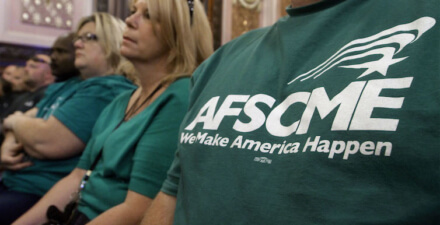Brad DeLong: Worthy reads on equitable growth, October 12–18, 2018
Worthy reads from Equitable Growth:
- Kate Bahn will be speaking at the closing plenary of the “Pathways to Gender Equality” conference at American University on November 2, 2018.
- Another very good “Equitable Growth in Conversation” piece, this time with Ioana Marinescu and Herbert Hovenkamp about modern antitrust policy and the monopoly and the monopsony analyses that need to proceed on two separate tracks. Kate Bahn and Michael Kades lead the “In conversation with Herbert Hovenkamp and Ioana Marinescu,” in which Hovenkamp observes: “You can’t just do a workup on the product side and then assume you’ve gotten all the work done. If you’ve got a special class of employees, like computer engineers, those engineers might work for firms that don’t compete with each other at all on the product side, and that means that that market will end up having different boundaries than the product market has for those same firms.”
- Will McGrew makes a good catch here and directs us to Brendan Greely of the Financial Times in Equitable Growth’s weekly edition of “Weekend Reading: “Monopsony and Mobility” Edition.” McGrew writes: “Brendan Greely of the Financial Times dives into another aspect of the mobility divide: social capital. Using frequent Equitable Growth guest authors and economists Raj Chetty, Nathaniel Hendren, and John Friedman’s recently published Opportunity Atlas as a starting point, Greely explains why relationships and communities are more important than the mere availability of jobs in determining economic mobility. Beyond enhancing a neighborhood’s services and amenities such as public schools, growing up in proximity to people with a diversity of highly paid jobs provides children with role models and connections to higher quality jobs and more numerous economic opportunities.”
- Well worth watching is Heather Boushey, along with Paul Krugman and Richard Epstein, from this past July at the City University of New York event, “The Many Faces of Liberalism.”
- It may finally be the time that we get some traction on better measures of economic growth and prosperity than Gross Domestic Product. So, go back and re-read Thomas Piketty, Emmanuel Saez, and Gabriel Zucman from 2016, “Distributional national accounts: Methods and estimates for the United States,” in which they write: “This paper combines tax, survey, and national accounts data to estimate the distribution of national income in the United States since 1913. Our distributional national accounts capture 100 percent of national income, allowing us to compute growth rates for each quantile of the income distribution consistent with macroeconomic growth.”
- The best coverage of the Tax Cuts and Jobs Act of 2017 was provided by Greg Leiserson. As we approach the 1 year anniversary, we can actually begin estimating what the tax cut’s effects truly were. To get ready to do so, remember his primer on how to assess the new law. Read “Assessing the economic effects of the Tax Cuts and Jobs Act,” in which Leiserson writes: “An assessment … should focus on the impact of the legislation on wage rates for workers, the return on business investment, and the size of future federal budget deficits.”
Worthy reads not from Equitable Growth:
- This, from 8 years ago, is still the best thing I have seen about “sustainability” and its proper role in economic analysis. Read the 2010 working paper by Kenneth J. Arrow, Partha Dasgupta, Lawrence H. Goulder, Kevin J. Mumford, and Kirsten Oleson, “Sustainability and the Measurement of Wealth,” in which they write: “We develop a consistent and comprehensive theoretical framework for assessing whether economic growth is compatible with sustaining well-being over time. The framework focuses on whether a comprehensive measure of wealth—one that accounts for natural capital and human capital as well as reproducible capital—is maintained through time.”
- Getting deeply into the weeds on whether much-observed social mobility is actually an error in measuring “true status.” The answer appears to be “no.” Read Martin Nybom and Kelly Vosters, “Intergenerational Transmission of Socioeconomic Status,” in which they write: “There is no simple law of mobility: In 2014, Gregory Clark proposed a ‘simple law of mobility’ suggesting that intergenerational mobility is much lower than previously believed, and relatively uniform across countries … This column tests this … using U.S. and Swedish data … no evidence of a rise in intergenerational persistence and no evidence of uniformity across countries.”
- Read what Paul Romer won the 2018 Nobel Prize for, “Endogenous Technological Change,” in which he writes: “Growth in this model is driven by technological change that arises from intentional investment decisions made by profit maximizing agents. The distinguishing feature of the technology as an input is that it is neither a conventional good nor a public good; it is a nonrival, partially excludable good.”
- This is not what William D. Nordhaus won the 2018 Nobel Prize for, but this paper has had the biggest influence on me. Read “Do Real-Output and Real-Wage Measures Capture Reality? The History of Lighting Suggests Not,” in which he writes, “During periods of major technological change, the construction of accurate price indexes that capture the impact of new technologies on living standards is beyond the practical capability of official statistical agencies. The essential difficulty arises for the obvious but usually overlooked reason that most of the goods we consume today were not produced a century ago.”
- Chris Dillow reviews the most entertaining book on financial fraud I have ever read, “Lying for Money: a review,” in which he writes: “Squalid crude affairs committed mostly by inadequates. This is a message of Dan Davies’ history of fraud, “Lying For Money.”
- Friedrich Engels, 175 years ago, put his finger on the major flaw in economics that Paul Romer has tried to repair over his career. Read Engels’ “Outlines of a Critique of Political Economy,” in which he wrote: “According to the economists, the production costs of a commodity consist of three elements: the rent for the piece of land required to produce the raw material; the capital with its profit; and the wages for the labour required for production and manufacture … [another] factor which the economist does not think about—I mean the mental element of invention, of thought.”





